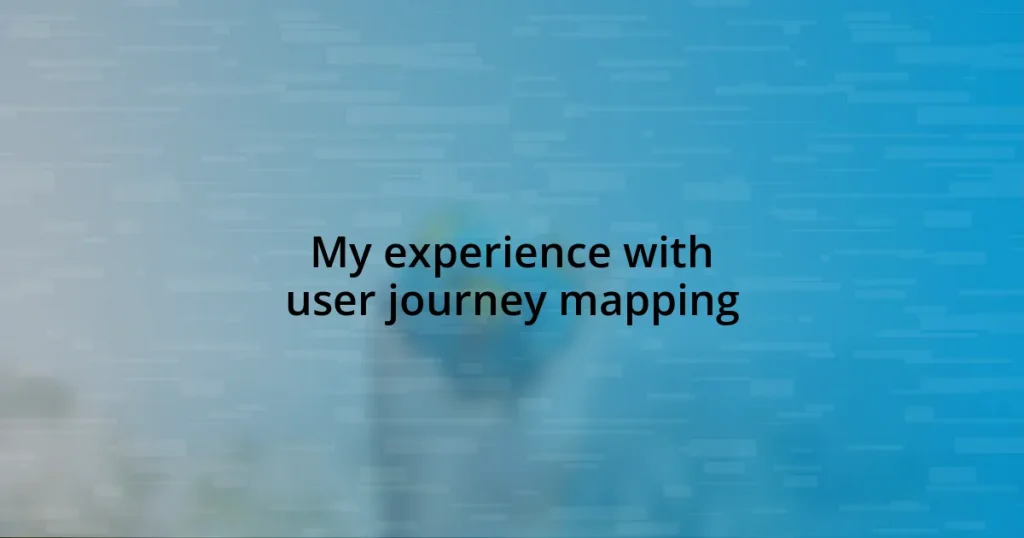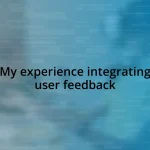Key takeaways:
- User journey mapping creates a visual representation of user experiences, highlighting their emotions, motivations, and pain points.
- It fosters collaboration among teams, enhancing communication and generating innovative solutions through shared insights.
- User journey mapping aids in decision-making, allowing for prioritization of resources and content based on user needs.
- Effective tools like Miro, Lucidchart, and Smaply enhance the mapping process, facilitating teamwork and deeper user understanding.
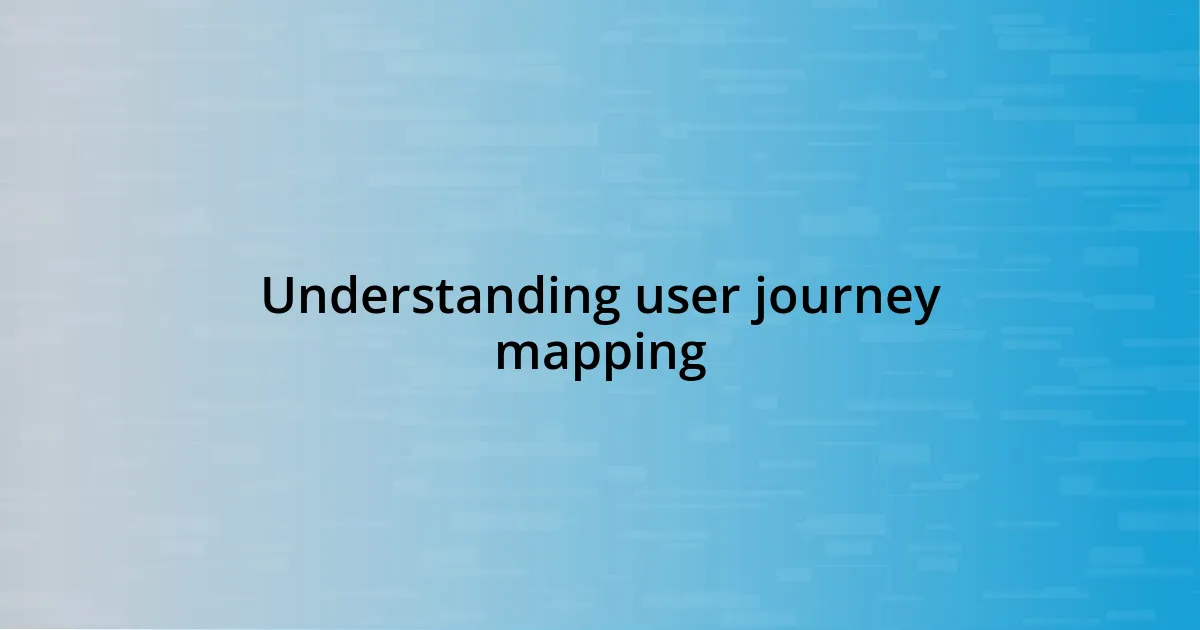
Understanding user journey mapping
User journey mapping is like creating a roadmap of a user’s experience with a product or service. When I first dived into this concept, I was struck by how it forces you to step into the shoes of your users. Have you ever paused to think about their emotions at each interaction? It’s fascinating to uncover the highs and lows they experience along the way.
In my experience, a well-crafted user journey map reveals not just the actions users take, but also their motivations and frustrations. I remember creating one for a website redesign, and it was eye-opening to visualize the moments where users felt lost or delighted. Recognizing these sentiments helped our team focus on specific touchpoints to enhance, leading to tangible improvements in user satisfaction.
Visualizing the user journey can be incredibly rewarding. Once, I facilitated a workshop where team members shared stories about their interactions with customers. The collective empathy that arose from understanding the user’s perspective transformed our approach to product development. Have you tried collaborating this way? It truly underscores how user journey mapping isn’t just a task; it’s a strategy for building meaningful connections.
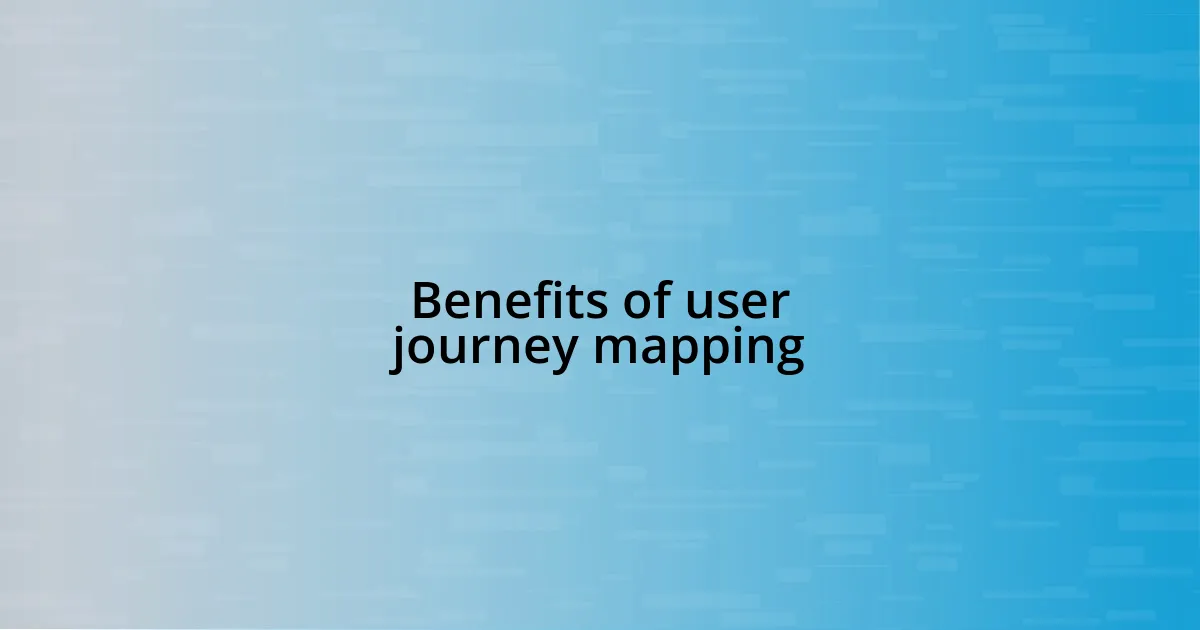
Benefits of user journey mapping
User journey mapping offers a plethora of advantages that can drastically enhance the design and functionality of a product. For instance, during a project for a retail app, I realized that mapping the user’s journey helped pinpoint critical pain points. Addressing these challenges led to a smoother checkout process, significantly reducing cart abandonment rates. Have you ever noticed how slight adjustments based on user feedback can lead to substantial improvements?
Another benefit lies in fostering cross-team collaboration. I remember a project where I brought together developers, marketers, and designers to create a user journey map. The shared insights opened up conversations that bridged gaps in our understanding of the user experience. This collaborative atmosphere not only strengthened our team dynamics but also paved the way for innovative solutions that we wouldn’t have explored individually.
Furthermore, user journey mapping provides clarity in decision-making. In one of my experiences refining a content strategy, we utilized journey maps to prioritize content creation based on user needs at different touchpoints. This strategic focus ensured that our resources were allocated effectively, and ultimately, we saw an improvement in user engagement metrics. Does that resonate with you? It’s fascinating how a structured visual can drive informed choices that impact overall performance.
| Benefit | Description |
|---|---|
| Identifies Pain Points | Helps uncover issues causing user frustration, allowing for focused improvements. |
| Encourages Collaboration | Brings together different teams, enhancing communication and idea generation. |
| Guides Decision-Making | Supports prioritization of tasks and resources based on user needs. |
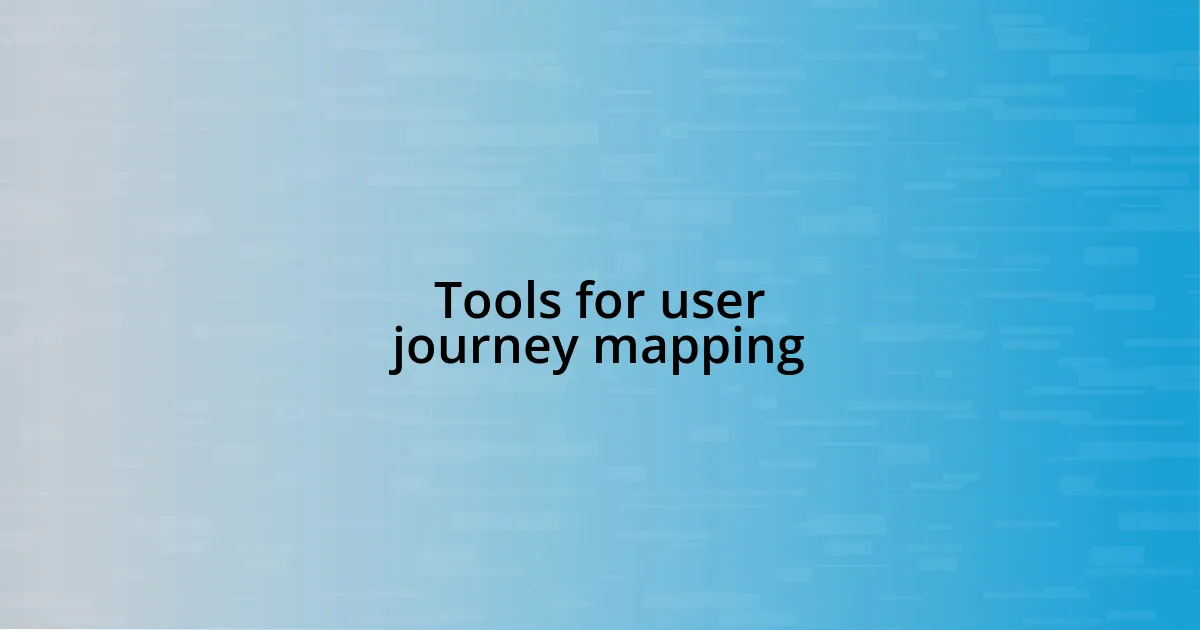
Tools for user journey mapping
Tools for user journey mapping can make all the difference in creating effective and impactful visuals. I often rely on tools like Miro and Lucidchart because they allow for easy collaboration and real-time editing. I remember a day spent brainstorming with my team on Miro; the vibrant sticky notes and flowing diagrams made it feel like our ideas were really coming to life. Have you ever used a tool that transformed your creative process?
Another tool I’ve found incredibly useful is Smaply. This platform specializes in journey mapping and offers features like persona integration and journey insights. When I used Smaply for a project, the ability to visualize both customer personas and their journeys provided a richer understanding of our audience. It sparked conversations that led to innovative solutions—something I hadn’t anticipated at the outset. Have you explored how tools can deepen your understanding of your users?
Also, let’s not overlook simple tools like spreadsheets or presentation software. While they may seem basic, I’ve used them for quick mapping sessions, allowing me to effectively structure thoughts on the fly. One time, sitting in a café, I sketched our user journey on a napkin while discussing ideas with a colleague. It reminded me that sometimes, the simplest tools lead to the most creative breakthroughs. What’s the most unconventional medium you’ve used for mapping?










